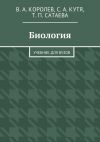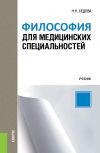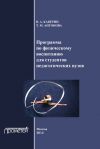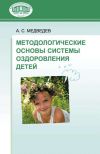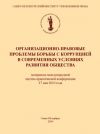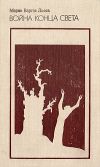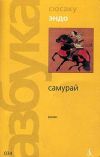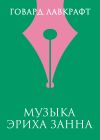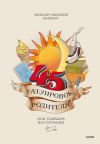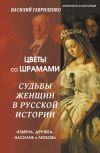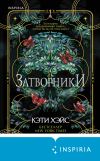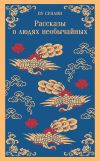Текст книги "СИБР (хирургическое лечение и профилактика)"

Автор книги: Коллектив авторов
Жанр: Медицина, Наука и Образование
Возрастные ограничения: +18
сообщить о неприемлемом содержимом
Текущая страница: 3 (всего у книги 18 страниц) [доступный отрывок для чтения: 6 страниц]
72. Плоскирева, А. А. Пробиотики в питании: от рождения и старше [электронный ресурс] / А. А. Плоскирева, А. В. Горелов // Лечащий врач. – 2011. – № 2. – режим доступа: http:// www.lvrach.ru / 2011 / 02 / 15435120 / .
73. Angela, M. Human milk glycobiome and its impact on the infant gastrointestinal microbiota / M. Angela, J. Zivkovic, B. Carlito // Colloquium of the National Academy of Sciences. – Microbes and Health. – held November. – №№ 2–3. – P. 2009.
74. Cavalieri, D. Impact of diet in shaping gut microbiota revealed by a comparative study in children from Europe and rural Africa / D. Cavalieri, M. Di Paola et al. // Proc. Natl. Acad. Sci USA. – 2010. – № 107 (33). – P. 14691–14696.
75. Кучерявый, Ю. А. Синдром избыточного бактериального роста / Ю. А. Кучерявый, Т. С. Оганесян // РЖГГК. – 2010. – № 5. – С. 63–68.
76. Saad, R. Breath tests for gastrointestinal disease: the real deal or just a lot of hot air? / R. Saad, W. Chey // Gastroenterology. – 2007. – Vol. 133. – P. 1763–1766.
77. Бондаренко В. М., Мацулевич Т. В. Дисбактериоз кишечника как клинико-лабораторный синдром: современное состояние проблемы: Руководство для врачей. – М.: ГЭОТАР-Медиа, 2007. – 304 с.
78. Плотникова, Е. Ю. Некоторые аспекты диагностики и лечения избыточной бактериальной контаминации тонкой кишки в клинической практике [электронный ресурс] / Е. Ю. Плотникова, М. В. Борщ, М. В. Краснова, Е. Н. Баранова // Лечащий врач. – 2013. – № 4. – режим доступа: http://www.lvrach.ru/ 2013 / 02 / 15435625.
79. Плотникова Е. Ю., Краснова М. В., Баранова Е. Н., Шамрай М. А., Борщ М. В. Дыхательные водородные тесты в диагностике синдрома избыточного бактериального роста. В кн.: Диагностика заболеваний желудочно-кишечного тракта по выдыхаемому воздуху. Сборник научных статей III международного конкурса научно-исследовательских работ. СПб, 2012. С. 64–70.
80. Маев, И. В. Терапевтическая тактика при синдроме избыточного бактериального роста в тонкой кишке / И. В. Маев, А. А. Самсонов // Consilium Medicum. – 2007. – № 7. С. 45–56.
81. Gabrielli, M. Diagnosis of small intestinal bacterial оvergrowth in the clinical practice / M. Gabrielli, G. D. Angelo, T. DI Rienzo, E. Scarpellini, V. Ojetti // European Review for Medical and Pharmacological Sciences. – 2013. – V. 17. – Р. 30–35.
82. Riodan, S. M. Small intestinal mucosal immunityandmorphometryinluminal overgrowthof indigenousgut flora / S. M. Riodan, C. J. Mciver, D. Wakefild, et al. // Am. J. Gastroenterol. – 2001. – № 96. – P. 494–500.
83. Bures, J. Small intestinal bacterial overgrowth syndrome / J. Bures, J. Cyrany, D. Kohoutova // WorldJGastroenterol. – 2010. – № 16. – P. 2978–2990.
84. Lawley, T. D. Intestinal colonization resistance / D. T. Lawley, W. Alan Walker // Immunology. – 2012. – Vol. 138. – P. 1–11.
85. Renz, H. The impact of perinatal immune development on mucosal homeostasis and chronic inflammation / H. Renz, P. Brandtzaeg, M. Hornef // Nat. Rev. Immunol. – 2011. – № 12. – P. 9–23.
86. Blaser, M. J. What are the consequences of the disappearing human microbiota? / M. J. Blaser, S. Falkow // Nat. Rev. Microbiol. – 2009. – № 7. – Р. 887–94.
87. Leser, T. D. Better living through microbial action: the benefits of the mammalian gastrointestinal microbiota on the host / T. D. Leser, L. Molbak // Environ Microbiol. – 2009. – № 11. – P. 2194–206.
88. Qin, J. A human gut microbial gene catalogue established by metagenomic sequencing / J. Qin, R. Li, J. Raes et al. // Natureю – 2010. – № 464. – P. 59–65.
89. Eberl, G. A new vision of immunity: homeostasis of the superorganism. / G. Eberl // Mucosal Immunol. – 2010. – № 3. – P. 450–60.
90. Bohnhoff, M. The effect of an antibiotic on the susceptibility of the mouse’s intestinal tract to Salmonellai nfection / M. Bohnhoff, B. L. Drake, C. P. Miller // Antibiot. Annu. – 1955. – № 3. – P. 453–5.
91. Falkow, S. What is a pathogen? / S. Falkow // ASM News. – 1997. – № 63. – P. 359–65.
92. Stecher, B. The role of microbiota in infectious disease / B. Stecher, W. D. Hardt // Trends Microbiol. – 2008. – № 16. – P. 107–14.
93. Coombes, B. K. Evasive maneuvers by secreted bacterial proteins to avoid innate immune responses / B. K. Coombes, Y. Valdez, B. B. Finlay. – Curr. Biol. – 2004. – № 14. – P. R856–67.
94. Lupp, C. Host-mediated inflammation disrupts the intestinal microbiota and promotes the overgrowth of Enterobacteriaceae / C. Lupp, M. L. Robertson, M. E. Wickham et al. // Cell Host Microbe. – 2007. – № 2. – P. 119–29.
95. Stecher, B. Salmonella enterica serovar typhimurium exploits inflammation to compete with the intestinal microbiota / B. Stecher, R. Robbiani, A. W. Walker et al. // PLoS Biol. – 2007. – № 5. – P. 2177–89.
96. Endt, K. The microbiota mediates pathogen clearance from the gut lumen after non-typhoidal Salmonelladiarrhea / K. Endt, B. Stecher, S. Chaffron et al. // PLoS Pathog. – 2010. – № 6. – P. e1001097.
97. Lawley, T. D. Antibiotic treatment ofClostridium difficilecarrier mice triggers a supershedder state, spore-mediated transmission, and severe disease in immunocompromised hosts / T. D. Lawley, S. Clare, A. W. Walker et al. // Infect Immun. – 2009. – № 77. – P. 3661–9.
98. Palmer, C. Development of the human infant intestinal microbiota / C. Palmer, E. M. Bik, D. V. DiGiulio // PLoS Biol. – 2007. – № 5. – P. 177.
99. Koenig, J. E. Succession of microbial consortia in the developing infant gut microbiome / J. E. Koenig, A. Spor, N. Scalfone et al. // Proc Natl. Acad. Sci USA. – 2011. – № 108 (Suppl. 1). – P. 4578–85.
100. Park, H. K. Molecular analysis of colonized bacteria in a human newborn infant gut / H. K. Park, S. S. Shim, S. Y. Kim // Microbiol. – 2005. – № 43. – P. 345–53.
101. Dominguez-Bello, M. G. Delivery mode shapes the acquisition and structure of the initial microbiota across multiple body habitats in newborns / M. G. Dominguez-Bello, E. K. Costello, M. Contreras et a. // Proc. Nat. Acad. Sci USA. – 2010. – № 107. – Р. 119–127.
102. Jangi, S. Asymptomatic colonization by Clostridium ifficilein infants: implications for disease in later life // S. Jangi, J. T. Lamont // J. Pediatr. Gastroenterol. – Nutr. – 2010. – № 51ю – P. 2–7.
103. Harmsen, H. J. Analysis of intestinal flora development in breast-fed and formula-fedinfants by using molecular identification and detection methods / H. J. Harmsen, A. C. Wildeboer-Veloo, G. C. Raangs et al. J. Pediat.r Gastroenterol. // Nutr. – 2000. – № 30. – P. 61–73.
104. Zivkovic, A. M. Human milk glycobiome and its impact on the infant gastrointestinal microbiota / A. M. Zivkovic, J. B. German, C. B. Lebrilla et al. // Proc. Natl. Acad. Sci USA – 2011. – № 108 (Suppl. 1). – P. 46–53.
105. Hascoet, J. M. Effect of formula composition on the development of infant gut microbiota / J. M. Hascoet, C. Hubert, F. Rochat et al. // J. Pediatr. Gastroenterol. // Nutr. – 2011. – № 52. – P. 756–762.
106. Walker, A. W. Dominant and diet-responsive groups of bacteria within the human colonic microbiota / A. W. Walker, J. Ince, S. H. Duncan et al. // ISME. – J. – 2011. – № 5. – P. 220–230.
107. Wu, G. D. Linking long-term dietary patterns with gut microbial enterotypes / G. D. Wu, J. Chen, C. Hoffmann et al. // Science. – 2011. № 334. – P. 105–108.
108. Dethlefsen, L. Incomplete recovery and individualized responses of the human distal gut microbiota to repeated antibiotic perturbation / L. Dethlefsen, D. A. Relman // Proc. Natl. Acad. Sci USA. – 2011. – № 108 (Suppl. 1). – P. 4554–4561.
109. Jernberg, C. Long-term ecological impacts of antibiotic administration on the human intestinal microbiota / C. Jernberg, S. Lofmark, C. Edlund et al. // ISME J. – 2007. – № 1. – P. 56–66.
110. Hayashi, H. Molecular analysis of jejunal, ileal, caecal and recto-sigmoidal human colonic microbiota using 16S rRNA gene libraries and terminal restriction fragment length polymorphism H. Hayashi, R. Takahashi, T. Nishi et al. //.J Med. Microbiol. – 2005. – № 11. – P. 1093–10101.
111. Wilson, M. Microbial Inhabitants of Humans: Their Ecology and Role in Health and Disease, 1st edn. New York: Cambridge University Press, 2005.
112. Macfarlane, S. Regulation of short-chain fatty acid production / S. Macfarlane, G. T. Macfarlane // Proc. Nutr. Soc. – 2003. – № 62. – P. 67–72.
113. Rajilic-Stojanovic, M. Diversity of the human gastrointestinal tract microbiota revisited / M. Rajilic-Stojanovic, H. Smidt, W. M. de Vos // Environ Microbiol. – 2007. – № 9. – P. 2125–3216.
114. Dethlefsen, L. An ecological and evolutionary perspective on human – microbe mutualism and disease / L. Dethlefsen, M. McFallNgai, D. A. Relman // Nature. – 2007. – № 449. – P. 811–819.
115. Lapierre, P. Estimating the size of the bacterial pan-genome / P. Lapierre, J. P. Gogarten // Trends Genet. – 2009. – № 25. – P. 107–110.
116. Gill, N. The gut microbiota: challenging immunology / N. Gill, B. B. Finlay // Nat. Rev. Immunol. – 2011. – № 11. – P. 636–637.
117. Norin, E. Intestinal microflora functions in laboratory mice claimed to harbor a «normal» intestinal microflora. Is the SPF concept running out of date? / E. Norin, T. Midtvedt // Anaerobe. – 2010. – № 16. – P. 311–320.
118. Hooper, L. V. How host – microbial interactions shape the nutrient environment of the mammalian intestine / L. V. Hooper, T. Midtvedt, J. I. Gordon // Annu. Rev. Nutr. – 2002. – № 22. – P. 283–307.
119. Turnbaugh, P. J. A core gut microbiome in obese and lean twins / P. J. Turnbaugh, M. Hamady, T. Yatsunenko et al. // Nature. – 2009. – № 457. – P. 480–484.
120. Mortensen, P. B. Short-chain fatty acids in the human colon: relation to gastrointestinal health and disease / P. B. Mortensen, M. R. Clausen // Scand. J. Gastroenterol. Suppl. – 1996. – № 216. – P. 132–148.
121. Tap, J. Towards the human intestinal microbiota phylogenetic core / J. Tap, S. Mondot, F. Levenez et al. // Environ Microbiol. – 2009. – № 11. – P. 2574–2584.
122. Eckburg, P. B. Diversity of the human intestinal microbial flora / P. B. Eckburg, E. M. Bik, C. N. Bernstein et al. // Science. – 2005. – № 308. – P. 1635–1648.
123. Zoetendal, E. G. Mucosa-associated bacteria in the human gastrointestinal tract are uniformly distributed along the colon and differ from the community recovered from feces / E. G. Zoetendal, A. von Wright, T. Vilpponen-Salmela et al. // Appl. Environ Microbiol. – 2002. – № 68. – P. 3401–3407.
124. Macfarlane, S. Regulation of short-chain fatty acid production / S. Macfarlane, G. T. Macfarlane // Proc. Nutr. Soc. – 2003. – № 62. – P. 67–72.
125. Johansson, M. E. Microbiology. Keeping bacteria at a distance / M. E. Johansson, G. C. Hansson // Science. – 2011. – № 334. – P. 182–183.
126. Juge, N. Microbial adhesins to gastrointestinal mucus / N. Juge // Trends Microbiol. – 2012. – № 20. – P. 30–39.
127. Johansson, M. E. The two mucus layers of colon are organized by the MUC2 mucin, whereas the outer layer is a legislator of host – microbial interactions / M. E. Johansson, J. M. Larsson, G. C. Hansson // Proc. Natl. Acad. Sci USA. – 2011. – № 108 (Suppl. 1). – P. 4659–4665.
128. Macpherson, A. J. The immune geography of IgA induction and function / A. J. Macpherson, K. D. McCoy, F. E. Johansen // Mucosal Immunol. – 2008. – № 1. – P. 11–22.
129. McGuckin, M. A. Mucin dynamics and enteric pathogens / M. A. Guckin, S. K. Linden, P. Sutton et al. // Nat. Rev. Microbiol. – 2011. – № 9. – P. 265–278.
130. Salzman, N. H. Enteric defensins are essential regulators of intestinal microbial ecology / N. H. Salzman, K. Hung, D. Haribhai et al. // Nat. Immunol. – 2010. – № 11. – P. 76–83.
131. Vaishnava, S. The antibacterial lectin RegIIIcpromotes the spatial segregation of microbiota and host in the intestine / S. Vaishnava, M. Yamamoto, K. M. Severson et al. // Science. – 2011. – № 334. – Р. 255–258.
132. Macfarlane, G. T. The control and consequences of bacterial fermentation in the human colon / G. T. Macfarlane // J. Appl. Bacteriol. – 1991. – № 70. – P. 443–459.
133. Leitch, E. C. Selective colonization of insoluble substrates by human faecal bacteria / E. C. Leitch, A. W. Walker, S. H. Duncan // Environ Microbiol. – 2007. – № 9. – P. 667–679.
134. Walker, A. W. The species composition of the human intestinal microbiota differs between particle-associated and liquid phase communities / A. W. Walker, S. H. Duncan, H. J. Harmsen et al. // Environ Microbiol. – 2008. – № 10. – P. 3275–3283.
135. Hopkins, M. J. Nondigestible oligosaccharides enhance bacterial colonization resistance against Clostridium difficile in vitro / M. J. Hopkins, G. T. Macfarlane // Appl. Environ Microbiol. – 2003. – № 69. – P. 1920–1927.
136. Lievin, V. Bifidobacterium strains from resident infant human gastrointestinal microflora exert antimicrobial activity / V. Lievin, I. Peiffer, S. Hudault et al. // Gut. – 2000. – № 47. – P. 646–652.
137. Servin AL. Antagonistic activities of lactobacilli and bifidobacteria against microbial pathogens / A. L. Servin // FEMS Microbiol. Rev. – 2004. – № 28. – P. 405–440.
138. Flint, H. J. Interactions and competition within the microbial community of the human colon: links between diet and health / H. J. Flint, S. H. Duncan, K. P. Scott et al. // Environ Microbiol. – 2007. – № 9. – P. 1101–1111.
139. Ley, R. E. Ecological and evolutionary forces shaping microbial diversity in the human intestine / R. E. Ley, D. A. Peterson, J. I. Gordon // Cell. – 2006. – № 124. – P. 837–8348.
140. Freter, R. Mechanisms that control bacterial populations in continuous-flow culture models of mouse large intestinal flora / R. Freter, H. Brickner, M. Botney et al. // Infect. Immun. – 1983. – № 39. – P. 676–685.
141. Wilson, K. H. Role of competition for nutrients in suppression ofClostridium difficileby the colonic microflora / K. H. Wilson, F. Perini // Infect. Immun1. – 988. – № 56. – P. 2610–2614.
142. Juge, N. Microbial adhesins to gastrointestinal mucus / N. Juge // Trends Microbiol. – 2012. – № 20. – P. 30–39.
143. Camilli, A. Bacterial small-molecule signaling pathways / A. Camilli, B. L. Bassler // Science. – 2006. – № 311. – P. 1113– 1116.
144. Gantois, I. Butyrate specifically down-regulates salmonella pathogenicity island 1 gene expression / I. Gantois, R. Ducatelle, F. Pasmans et al. // Appl. Environ Microbiol. – 2006. – № 72. – P. 946–949.
145. Monack, D. M. Persistent bacterial infections: the interface of the pathogen and the host immune system / D. M. Monack, A. Mueller, S. Falkow // Nat. Rev. Microbiol. – 2004. – № 2. – P. 747–765.
146. Macpherson, A. J. The immune geography of IgA induction and function / A. J. Macpherson, K. D. McCoy, F. E. Johansen // Mucosal Immunol. – 2008. – № 1. – P. 11–22.
147. Cherrington, C. A. Short-chain organic acids at pH 5.0 killEscherichia coliandSalmonellaspp. without causing membrane perturbation / C. A. Cherrington, M. Hinton, G. R. Pearson et al. // J. Appl. Bacteriol. – 1991. – № 70. – P. 161–165.
148. Duncan, S. H. The role of pH in determining the species composition of the human colonic microbiota / S. H. Duncan, P. Louis, J. M. Thomson et al. // Environ Microbiol. – 2009. – № 11. – P. 2112–2122.
149. Shin R. Influence of intestinal anaerobes and organic acids on the growth of enterohaemorrhagic Escherichia coliO157:H7 / R. Shin, M. Suzuki, Y. Morishita // J. Med. Microbiol. – 2002. – № 51. – P. 201–206.
150. Shin, R. Bifidobacterium animalissubsp.lactis fermented milk product reduces inflammation by altering a niche for colitogenic microbes / R. Shin // Proc. Natl. Acad. Sci USA. – 2010. – № 107. – P. 18132–18137.
151. Marteyn, B. Breathing life into pathogens: the influence of oxygen on bacterial virulence and host responses in the gastrointestinal tract / B. Marteyn, F. B. Scorza, P. J. Sansonetti et al. // Cell. Microbiol. – 2011. – № 13. – P. 171–176.
152. Altier, C. Genetic and environmental control of salmonella invasion / C. J. Altier // J. Microbiol. – 2005. – P. 85–92.
153. Marteyn, B. Modulation ofShigellavirulence in response to available oxygen in vivo / B. Marteyn, N. P. West, D. F. Browning et al. // Nature. – 2010. – № 465. – P. 355–358.
154. Dobson, A. Bacteriocin production: a probiotic trait? / A. Dobson, P. D. Cotter, R. P. Ross et al. // Appl. Environ Microbiol. – 2012. – № 78. –P. 1–6.
155. Corr, S. C. Understanding the mechanisms by which probiotics inhibit gastrointestinal pathogens / S. C. Corr, C. Hill, C. G. Gahan // Adv. Food Nutr. Res. – 2009. – № 56. – P. 1–15.
156. Gong, H. S. Mode of action of plantaricin MG, a bacteriocin active againstSalmonella typhimurium / H. S. Gong, X. C. Meng, H. Wang // J. Basic. Microbiol. – 2010. – № 50 (Suppl. 1). – P. 37–45.
157. Dabard, J. Ruminococcin A, a new lantibiotic produced by a Ruminococcus gnavusstrain isolated from human feces / J. Dabard, C. Bridonneau, C. Phillipe et al. // Appl Environ Microbiol. – 2001. – № 67. – P. 4111–4118.
158. Rea, M. C. Thuricin CD, a posttranslationally modified bacteriocin with a narrow spectrum of activity againstClostridium difficile / M. C. Rea, C. S. Sit, E. Clayton et al. // Proc. Natl. Acad. Sci USA. – 2010. – № 107. – P. 9352–9357.
159. Artis, D. Epithelial-cell recognition of commensal bacteria and maintenance of immune homeostasis in the gut / D. Artis // Nat. Rev. Immunol. – 2008. – № 8. – P. 411–420.
160. Atarashi, K. ATP drives lamina propria TH17 cell differentiation / K. Atarashi, J. Nishimura, T. Shima et al. // Nature. – 2008. – № 455. – P. 808–812.
161. Satoh-Takayama, N. Microbial flora drivesinterleukin 22 production in intestinal NKp46+cells that provide innate mucosal immune defense / N. Satoh-Takayama, C. A. Vosshenrich, S. LesjeanPottier et al. // Immunity. – 2008. – № 29. – P. 958–970.
162. Iwasaki, A. Toll-like receptor control of the adaptive immune responses / A. Iwasaki, R. Medzhitov // Nat. Immunol. – 2004. – № 5. – P. 987–995.
163. Rakoff-Nahoum, S. Recognition of commensal microflora by toll-like receptors is required for intestinal homeostasis / S. RakoffNahoum, J. Paglino, F. Eslami-Varzaneh et al. // Cell. – 2004. – № 118. – P. 229–241.
164. Kawai, T. The roles of TLRs, RLRs and NLRs in pathogen recognition / T. Kawai, S. Akira // Int. Immunol. – 2009. – № 21. – P. 317–337.
165. Barnes, M. J. Regulatory T cells reinforce intestinal homeostasis M. J. Barnes, F. Powrie // Immunity. – 2009. – № 31. – P. 401–411.
166. Lee, Y. K. Has the microbiota played a critical role in the evolution of the adaptive immune system? / Y. K. Lee, S. K. Mazmanian // Science. – 2010. – № 330. – P. 1768–1773.
167. Josefowicz, S. Z. Extrathymically generated regulatory T cells control mucosal TH2 inflammation / S. Z. Josefowicz, R. E. Niec, H. Y. Kim et al. // Nature. – 2012. – № 482. – P. 395–399.
168. Round, J. L. The gut microbiota shapes intestinal immune responses during health and disease / J. L. Round, S. K. Mazmanian // Nat. Rev. Immunol. – 2009. – № 9. – P. 313–323.
169. Round, J. L. Inducible Foxp3+ regulatory T-cell development by a commensal bacterium of the intestinal microbiota / J. L. Round, S. K. Mazmanian // Proc. Natl. Acad. Sci USA. – 2010. – № 107. – P. 12204–12209.
170. O’Mahony, C. Commensal-induced regulatory T cells mediate protection against pathogen-stimulated NF-jB activation / C. O’Mahony, P. Scully, D. O’Mahony et al. // PLoS Pathog. – 2008. – № 4. – P. 1000– 1012.
171. Atarashi K, Tanoue T, Shima Tet al. Induction of colonic regulatory T cells by indigenousClostridiumspecies.Science2011; № 331:337–41.
172. Ivanov, I. I. Induction of intestinal Th17 cells by segmented filamentous bacteria / K. Atarashi, T. Tanoue, T. Shima et al. // Cell. – 2009. – № 139. – P. 485–498.
173. Atarashi, K. ATP drives lamina propria TH17 cell differentiation / K. Atarashi, J. Nishimura, T. Shima et al. // Nature. – 2008. – № 455. – P. 808–812.
174. Fukuda, S. Bifidobacteria can protect from enteropathogenic infection through production of acetate / S. Fukuda, H. Toh, K. Hase et al. // Nature. – 2011. – № 469. – P. 543–547.
175. Wong, J. M. Colonic health: fermentation and short chain fatty acids / J. M. Wong, R. de Souza, C. W. Kendall // J. Clin. Gastroenterol. – 2006. – № 40. – P. 235–243.
176. Maslowski, K. M. Regulation of inflammatory responses by gut microbiota and chemoattractant receptor GPR43 / K. M. Maslowski, A. T. Vieira, A. Ng et al. // Nature. – 2009. – № 461. – P. 1282– 1286.
177. Barthel, M. Pretreatment of mice with streptomycin provides a Salmonella entericaserovar Typhimurium colitis model that allows analysis of both pathogen and host / M. Barthel, S. Hapfelmeier, L. Quintanilla-Martinez et al. // Infect. Immun. – 2003. – № 71. – P. 2839–2858.
178. Higgins, L. M. Role of bacterial intimin in colonic hyperplasia and inflammation / L. M. Higgins, G. Frankel, I. Connerton et al. // Science. – 1999. – № 285. – P. 588–591.
179. Geddes, K. Identification of an innate T helper type 17 response to intestinal bacterial pathogens / K. Geddes, S. J. Rubino, J. G. Magalhaes // Get. al Nat. Med. – 2011. – № 17. – P. 837– 844.
180. Lee, S. J. Temporal expression of bacterial proteins instructs host CD4 T cell expansion and Th17 development / S. J. Lee, J. B. McLachlan, J. R. Kurtz // PLoS Pathog. – 2012. – № 8. – P. 102–119.
181. Broz, P. Molecular mechanisms of inflammasome activation during microbial. infections / P. Broz, D. M. Monack / Immunol. Rev. 2011. – № 243. – P. 174–190.
182. Lupp, C. Host-mediated inflammation disrupts the intestinal microbiota and promotes the overgrowth of Enterobacteriaceae / C. Lupp, M. L. Robertson, M. E. Wickham et al. // Cell. Host. Microbe. – 2007. – № 2. – P. 119–129.
183. Stecher, B. Salmonella enterica serovar typhimurium exploits inflammation to compete with the intestinal microbiota / B. Stecher, R. Robbiani, A. W. Walker et al. // PLoS Biol. – 2007. – № 5. – P. 2177–2189.
184. Finlay, B. B. Salmonellav interactions with host cells: in vitro to in vivo / B. B. Finlay, J. H. Brumell // Philos. Trans R. Soc. Lond. Biol. Sci. – 2000. – № 355. – P. 623–631.
185. Raffatellu, M. Lipocalin-2 resistance confers an advantage to Salmonella enterica serotype Typhimurium for growth and survival in the inflamed intestine / M. Raffatellu, M. D. George, Y. Akiyama et al. // Cell. Host. Microbe. – 2009. – № 5. – P. 476–486.
186. Stelter, C. Salmonellainduced mucosal lectin RegIIIbkills competing gut microbiota / C. Stelter, R. Kappeli, C. Konig et al. // PLoS ONE. – 2011. – № 6. – P. 207–249.
187. Liu, J. Z. Zinc sequestration by the neutrophil protein calprotectin enhances salmonella growth in the inflamed gut / J. Z. Liu, S. Jellbauer, A. J. Poe et al. // Cell. Host. Microbe. – 2012. – № 11. – P. 227–239.
188. Thiennimitr, P. Intestinal inflammation allows Salmonella to use ethanolamine to compete with the microbiota / P. Thiennimitr, S. E. Winter, M. G. Winter et al. // Proc. Natl. Acad. Sci. USA. – 2011. – № 108. – P. 174–185.
189. Winter, S. E. Gut inflammation provides a respiratory electron acceptor forSalmonella / S. E. Winter, P. Thiennimitr, M. G. Winter et al. // Nature. – 2010. – № 467. – P. 426–429.
190. Lawley, T. D. Host transmission ofSalmonella entericaserovar Typhimurium is controlled by virulence factors and indigenous intestinal microbiota / T. D. Lawley, D. M. Bouley, Y. E. Hoy et al. // Infect. Immun. – 2008. – № 76. – P. 403–416.
191. Wickham, M. E. Virulence is positively selected by transmission success between mammalian hosts / M. E. Wickham, N. F. Brown, E. C. Boyle et al. // Curr. Biol. – 2007. – № 17. – P. 783–788.
192. Antonopoulos, D. A. Reproducible community dynamics of the gastrointestinal microbiota following antibiotic perturbation / D. A. Antonopoulos, S. M. Huse, H. G. Morrison // Infect. Immun. – 2009. – № 77. – P. 2367–2375.
193. Brandl, K. Vancomycin-resistant enterococci exploit antibiotic-induced innate immune deficits / K. Brandl, G. Plitas, C. N. Mihu et al. // Nature. – 2008. – № 455. – P. 804–807.
194. Bartlett, JG. Narrative review: the new epidemic of Clostridium difficile-associated enteric disease / J. G. Bartlett // Ann. Intern. Med. – 2006. – № 145. – P. 758–764.
195. Rupnik, M. Clostridium difficileinfection: new developments in epidemiology and pathogenesis / M. Rupnik, M. H. Wilcox, D. N. Gerding // Nat. Rev. Microbiol. – 2009. – № 7. – P. 526–536.
196. Shen A. Clostridium difficiletoxins: mediators of inflammation? / A. Shen // J. Innate Immun. – 2012. – № 4. – P. 149–158.
197. Lamont, J. T. How bacterial enterotoxins work: insights from in vivo studies / J. T. Lamont, E. Theodore, A. Woodward // Trans. Am. Clin. Climatol. Assoc. – 2002. – № 113. – P. 167–180; discussion 80–1.
198. Buffie, C. G. Profound alterations of intestinal microbiota following a single dose of clindamycin results in sustained susceptibility to Clostridium difficile-induced colitis / C. G. Buffie, I. Jarchum, M. Equinda et al. // Infect. Immun. – 2012. – № 80. – P. 62–73.
199. Chang, J. Y. Decreased diversity of the fecal Microbiome in recurrent Clostridium difficile-associated diarrhea / J. Y. Chang, D. A. Antonopoulos, A. Kalra et al. // J. Infect. Dis. – 2008. – № 197. – P. 435–438
200. Lawley, T. D. Antibiotic treatment ofClostridium difficilecarrier mice triggers a supershedder state, spore-mediated transmission, and severe disease in immunocompromised hosts / T. D. Lawley, S. Clare, A. W. Walker et al. // Infect. Immun. – 2009. – № 77. – P. 3661–3669.
201. Lawley, T. D. Proteomic and genomic characterization of highly infectiousClostridium difficile630 spores / T. D. Lawley, N. J. Croucher, L. Yu et al. // J. Bacteriol. – 2009. – № 191. – P. 5377– 5386.
202. Bartlett, JG. Clinical practice. Antibiotic-associated diarrhea / J. G. Bartlett // N. Engl. J. Med. – 2002. – № 346. – P. 334–339.
203. Moore, SR. Update on prolonged and persistent diarrhea in children / S. R. Moore // Curr. Opin. Gastroenterol. – 2011. – № 27. – P. 19–23.
204. Cooper, M. A. Fix the antibiotics pipeline / M. A. Cooper, D. Shlaes // Nature. – 2011. – № 472. – P. 32.
205. Bron, P. A. Emerging molecular insights into the interaction between probiotics and the host intestinal mucosa / P. A. Bron, P. van Baarlen, M. Kleerebezem // Nat. Rev. Microbiol. – 2012. – № 10. – P. 66–78.
206. Maukonen, J. Intra-individual diversity and similarity of salivary and faecal microbiota / J. Maukonen, J. Matto, M. L. Suihko // J. Med. Microbiol. – 2008. – № 12. – P. 1560–1568.
207. Dethlefsen, L. Assembly of the human intestinal microbiota / L. Dethlefsen, P. B. Eckburg, E. M. Bik // Trends Ecol. Evol. – 2006. – № 21. – P. 517–523.
208. Cummings, J. H. The control and consequences of bacterial fermentation in the human colon / J. H. Cummings, G. T. Macfarlane // J. Appl. Bacteriol. – 1991. – № 70. – P. 443–459.
209. Маевская, Е. А. Синдром избыточного бактериального роста в тонкой кишке: от последних научных данных к рутинной практике / Е. А. Маевская, С. В. Черемушкин, Н. А. Кривобородов, Ю. А. Кучерявый // Клиничексие перспективы гастроэнтерологии, гепатологии. – 2013. – № 5. – С. 29–40.
210. Wei, Z. Alterations of the gut microbiome and metabolome in alcoholic liver disease / Z. Wei, Z. Zhanxiang // World. J. Gastrointest. Pathophysiol. – 2014. – Vol. 5 (4). – P. 514–522.
211. Rawls, J. F. Special issue: gut microbial communities in health and disease / J. F. Rawls // Gut. Microbes. – 2012. – Vol. 3 (4). – P. 277–278.
212. Iebba, V. Gut microbiota and the immune system: an intimate partnership in health and disease / V. Iebba, M. Nicoletti, S. Schippa // Int. J. Immunopathol. Pharmacol. – 2012. – Vol. 25 (4). – P. 823–833.
213. Serban, D. E. The gut microbiota in the metagenomics era: sometimes a friend, sometimes a foe / D. E. Serban // Roum. Arch. Microbiol. Immunol. – 2011. – Vol. 70 (3). – P. 134–140.
214. Шендеров, Б. А. Медицинская микробная экология и функциональное питание. Пробиотики и функциональное питание. М.: ГРАНТЪ, 2001. 286 с.
215. Бондаренко, В. М. Пробиотики и механизмы их лечебного действия / В. М. Бондаренко, Р. П. Чупринина, Ж. И. Аладышева и др. // Эксперим. клин. гастроэнтерол. – 2004. – № 3. – С. 83–87.
216. Erickson, K. L. Probiotic immunomodulation in health and disease / K. L. Erickson, N. E. Hubbard // J. Nutr. – 2000. – № 130 (suppl). – P. 403–409.
217. Michetti, P. Lactobacilli for the management of Helicobacter pylori / P. Michetti // Nutrition. – 2001. – № 17. – P. 268–269.
218. Johnson, C. Anti Helicobacter pylori activity among lactic acid bacteria isolated from gastric biopsies and strains of Lactobacillus reuteri / C. Johnson, H. Jimson, S. Roos // Helicobacter. – 2003. – № 8. – P. 473.
219. Pedone, C. A. The effect of supplementation with milk fermented by Lactobacillus casei (strain DN-114 001) on acute diarrhoea in children attending day care centres / C. A. Pedone, A. O. Bernabeu, E. R. Postaire et al. // Int. J. Clin. Prac. – 1999. – № 53 (3). – P. 179–184.
220. Pedone, C. A. Multicentric study of the effect of milk fermented by Lactobacillus casei on the incidence of diarrhoea / C. A. Pedone, C. C. Arnaud, E. R. Postaire et al. // Int. J. Clin. Prac. – 2000. – № 54 (9). – P. 568–571.
221. Гореловб А. В. Использование пробиотических продуктов в лечении кишечных инфекций у детей / А. В. Горелов, Д. В. Усенко, Л. И. Елезова и др. // Вопросы современной педиатрии. – 2005. – № 2 (4). –С. 47–52.
222. Горелов, А. В. Влияние пробиотического продукта «Актимель» на состояние здоровья детей / А. В. Горелов, Д. В. Усенко // Вопросы современной педиатрии. – 2003. – №№ 2, 4. – С. 87–90.
223. Усенко, Д. В. Возможности применения пробиотического продукта с Lactobacillus casei Imunitass в клинической практике / Д. В. Усенко // Педиатрия. – 2009. – № 1. – С. 37–42.
224. Hickson, M. Use of probiotic Lactobacillus preparation to prevent diarrhoea associated with antibiotics: randomised double blind placebo controlled trial / M. Hickson, A. D’Souza, N. Muthu et al. // BMJ. – 2007. – № 335. – P. 80–85.
225. Turchet, P. Effect of fermented milk containing the probiotic Lactobacillus casei DN-114001 on winter infections in free-living elderly subjects: a randomized, controlled pilot study / P. Turchet, M. Laurenzano, S. Auboiron // J. Nutr. Heal. Agin. – 2003. – № 2 (7). – P. 75–77.
Правообладателям!
Данное произведение размещено по согласованию с ООО "ЛитРес" (20% исходного текста). Если размещение книги нарушает чьи-либо права, то сообщите об этом.Читателям!
Оплатили, но не знаете что делать дальше?